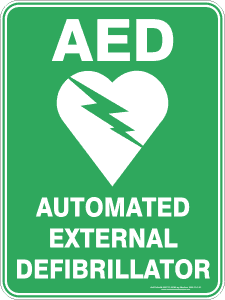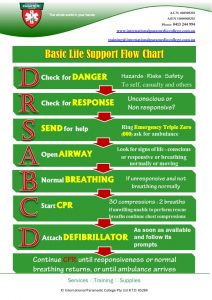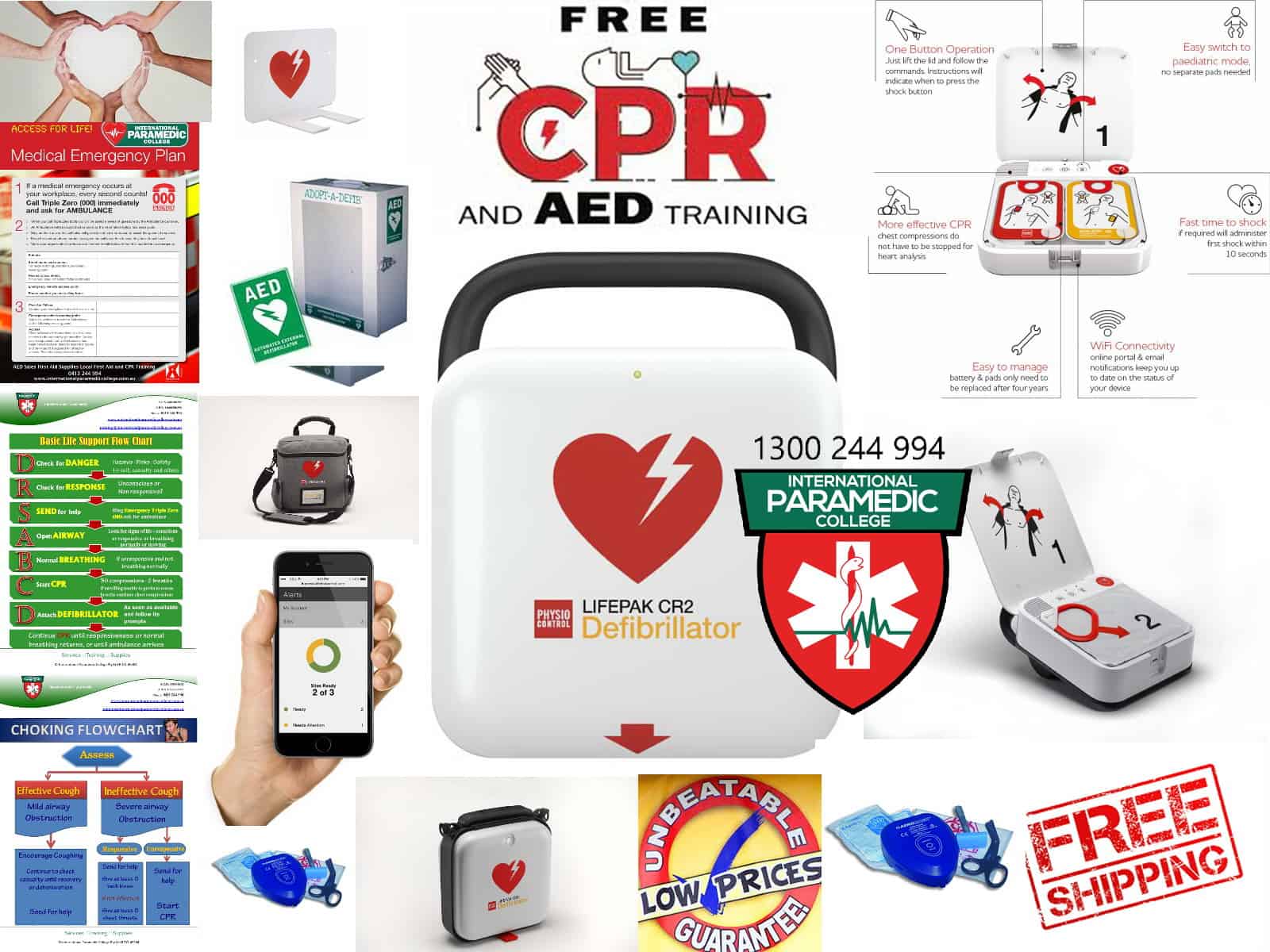Free AED Sign for Download
Download A Free Automated External Defibrillator (AED) Wall Sign
FREE AED SIGN Download
The “time to first shock” is a critical indicator of survival from sudden cardiac arrest, so a highly visible, easily accessible location with clear signage can reduce the time to first shock and save lives in the event of an emergency.
Where should we place our AED?
To find the best place for your AED ask yourself a few simple questions:
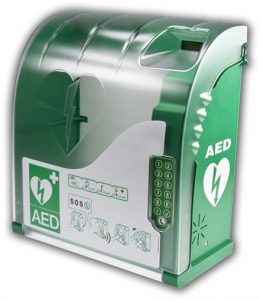 What is the highest risk area?
What is the highest risk area?
What is the highest visible traffic area closest to the high risk area?
Will the AED be accessible at all times?
Will it need to be indoors or outside?
An AED cabinet and signage make your AED highly visible and placement of your AED should be centralised and close to or located in areas that hold the highest risk of someone going into sudden cardiac arrest (SCA). You may need more than one AED to ensure they are close at hand and minimise response time.
An AED should be available at all times and never be locked in a drawer or hidden from view as “out of sight is out of mind”. 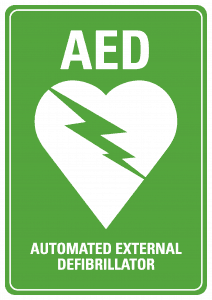 Every study shows that signage that directs people to the location of an AED is something that should be planned and consistent from floor to floor.
Every study shows that signage that directs people to the location of an AED is something that should be planned and consistent from floor to floor.
Consider that if your a large business or location that signage should be placed on every floor to direct people easily to the AED’s location. The signs should be located preferably by an elevator and/or staircase indicating which floor and/or room the AED is on. Other signs are available for locations with only one floor such as signs with directional arrows, 3 dimensional wall signs, as well as location specific signs. You could also consider the hire or lease of an AED as a solution for your business.
To help with clear signage so someone can find it quickly you can download this free wall chart from the Australian Resuscitation Council
Download your free AED wall sign here
Also, if a sudden cardiac arrest occurs the person will become unconscious and will stop breathing or stop breathing normally. While CPR keeps blood moving around the body, especially to the brain, it cannot reverse the electrical problem. This electrical problem needs to be treated with a defibrillator or AED to stop the chaotic electrical activity in the hope that a normal electrical mechanical response will be restored.
Call the Ambulance on 000 in Australia for sudden cardiac arrest. Start CPR and ensure you have a Defibrillator
Download your free wall chart here of the DRSABCD Emergency action plan
And while training isn’t essential to use an AED, CPR training will reduce the time to first shock and increase accuracy of pad placement which helps improve survival rates. Training shows how easy the “defib” is to use, reducing any fear, anxiety or reluctance people may have should they need to use a public access defibrillator or workplace AED.

Highly visible, high traffic and high risk areas are the best placement areas for AED’s in the workplace or as public access defibrillators.

